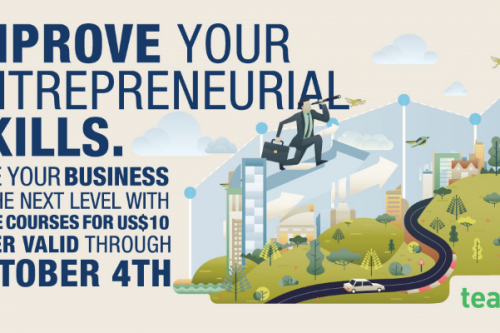Whether you are the teacher or the student, chances are that you have given technology some thought in terms of classroom integration. After all, smart devices, laptops and other tech gadgets are now more affordable and accessible than ever before. The typical notion of sticking to printed literature without relying on computers during formal education is outdated by modern standards.
While it is true that early tech exposure can lead to eyesight issues later on, the same can be said about any other teaching tool in the right context. Let’s take a look then at how technology can enhance the educational process and make learning more fun, engaging and memorable.
- Modern World Skills
As much as parents would like to disagree on the matter, technological devices offer a glimpse toward the real world for their children. Once formal education is over, a former student will be left with the reality of a job market which doesn’t take lightly to ignorance or lack of familiarity with technology.
Basic computer use, internet browsing, software management and jargon familiarity all fall under the benefits a student receives from technology in education. This makes the transition process toward the job market of tomorrow much easier and straightforward. Avoiding technology and sticking strictly to analogue, printed study materials will heavily impair a modern student as opposed to his or her peers down the line.
- Eco-Friendly Education
Even a layman will understand the benefits behind using tablets or computer screens as opposed to printed materials in everyday learning. The printed waste that should be accounted for in educational materials across the globe goes into metric tons.
Not only that, but books (even though comfortable to read) cost a lot more to produce, ship and distribute than online materials do. This makes it more difficult for students to acquire literature which by its nature goes against ecological preservation of whatever natural riches we have left in the world.
- Streamlined Tracking & Evaluation
One of the worst parts of being a teacher is the bureaucracy that goes with it in terms of performance tracking paperwork. In terms of content delivery and tracking, technological devices can make it easier for teachers to do their jobs.
Specialized software already exists in the effort to maximize classroom productivity and leave the tracking procedures up to the computer. It’s also much easier to keep data and records about individual students when they are kept on cloud storage platforms such as Google Drive and Dropbox respectively. This makes it easier to evaluate students’ work, offer crucial feedback and guide them towards actionable knowledge.
- AR and VR Integration
Given that no two countries in the world share the same history, terrain or biomes in general, it can be difficult to demonstrate certain things to students. Augmented Reality (AR) and Virtual Reality (VR) technologies aim to amend that by introducing guided, controlled demonstrative environments for teachers to use.
It is already possible to show a group of students how an ancient ruin used to look like in live 3D or to present them with a human body’s anatomic structure in a virtual environment. The applicative potential of AR and VR will only grow over time as the technology and peripherals become more affordable and widespread.
- Life-Long Learning Platforms
In terms of ongoing education, the 21st century offers a lot of possibilities even in the informal sector. You don’t have to attend college to gain relevant skills and knowledge to operate in a modern company. Instead, you can use platforms such as Udemy and Lynda to learn as you go along. These websites were designed with laypeople in mind, meaning that you don’t need any prior knowledge of any field in order to get started.
Best of all, these platforms are often more relevant and up-to-date than modern curriculums that revolve around the same topics in schools across the world. Jeff Holden, SEO specialist at Studicus.com spoke highly of online learning: “I’ve learned most of what I do for a living through online learning platforms. If there is a college course on day-to-day SEO optimization and digital marketing, I’ve yet to discover it.”
- Collaborative Potential
While group projects existed in school and college curriculums since their inception, the same can now be said about online learning. Collaborative platforms such as Asana offer a plethora of ways for students to work on group projects in a controlled environment. These platforms offer numerous applicative benefits including clear duty delegation, cloud-based file storage and security from any breaches of privacy.
Even with these possibilities at hand, however, students should find a way to interact face-to-face as much as possible during their formal education. Once that period is over, they will be far more comfortable with working online in remote job environments as a direct result.
- No Distance & Time Constraints
Long distance learning was nigh impossible only a few decades before. With the advent of the internet, however, people could finally get degrees and relevant knowledge from all corners of the world. This means that you can start studying, get professional skills and experience online and then follow that up with relevant employment in your local area.
Technology also made time constraints a thing of the past, where you can learn at any time of the day without worrying about class schedules. However, this idea was replaced by deadlines and milestone-based learning progress which is a much better and lenient alternative.
In Summary
If one would have to argue against technology in education, it would only apply in early childhood development. This period should be filled with as much physical, real-world activity as possible to promote motor and mental skill development. Once elementary school comes around, however, technology should become commonplace in classroom education.
And while older generations argue that learning can happen without computers to facilitate it, these comments come from a time when the world functioned differently. As the job market and professional landscapes become more competitive than ever before, giving your children an extra technological edge is a must for later career success.
Author’s BIO:
Linda Grandes is a full-time blogger at Studyton.com and a true expert in writing. She is interested in a variety of topics starting from education and ending at modern art. That`s why the idea of her blog cannot be narrowed to one topic as well. Linda also has vast experience in editing texts and knows all the angles of academic and professional writing thanks to her productive cooperation with WoWGrade.com. Linda is a passionate traveler and she is eager to learn new things and meet new people.




